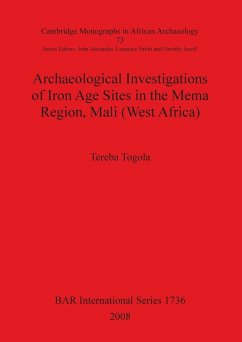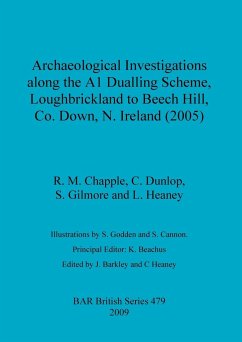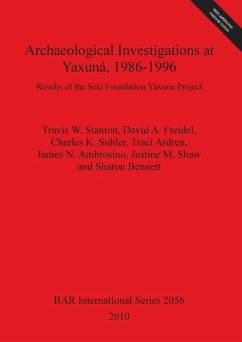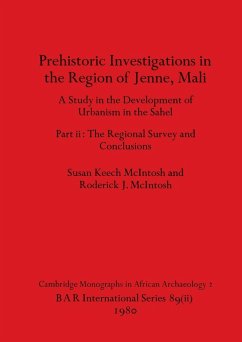
Archaeological Investigations in the Río Huamelula Valley
Settlement History and Material Culture in Southeastern Oaxaca Mexico
Versandkostenfrei!
Versandfertig in 1-2 Wochen
66,99 €
inkl. MwSt.

PAYBACK Punkte
33 °P sammeln!
In contrast to traditional stereotypes of the prehispanic culture of the Chontals of Oaxaca, architectural sites and artifacts along the Pacific coast indicate that there were more complex societies, well integrated into southeastern Mesoamerican networks of socio-cultural, economic and political interaction. This research presents the results of surface surveys and test excavations at the Río Huamelula, District of Tehuantepec, Oaxaca (southeastern Mexico), conducted by the author in 2001. The pottery classification aims at reconstructing the settlement chronology of the area from the Classi...
In contrast to traditional stereotypes of the prehispanic culture of the Chontals of Oaxaca, architectural sites and artifacts along the Pacific coast indicate that there were more complex societies, well integrated into southeastern Mesoamerican networks of socio-cultural, economic and political interaction. This research presents the results of surface surveys and test excavations at the Río Huamelula, District of Tehuantepec, Oaxaca (southeastern Mexico), conducted by the author in 2001. The pottery classification aims at reconstructing the settlement chronology of the area from the Classic to the early Colonial periods, c. A.D. 300-1600. Stylistic traits of ball-game-related artifacts, sculptural art, pottery, and architecture, as well as obsidian composition analysis all point to an intensive socio-cultural and economic exchange between the prehispanic communities along the southeastern Oaxaca coast and other Mesoamerican societies. The ethno-linguistic identity of the Classic-period occupants of the Río Huamelula valley remains enigmatic. The archaeological remains of two Postclassic Chontal villages, Huamelula and Astata, however, exhibit a socio-economic complexity contradicting the colonial characterization of Chontal culture. They further demonstrate a settlement continuity that, overall, reaches back into the Classic period and has lasted up to the present day.












